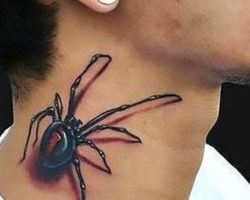My Pet Ate My Pot! | Now What?!!
Poison Control Centers are being inundated with frantic phone calls and people panicking because “My pet ate my pot! What should I do?!!”
Well, besides having to buy more pot, marijuana ingestion by a dog or cat is a serious event. Most reports (97%) of animal ingestion of pot involve dogs. The relative concentration of d-9-tetrahydrocannabinol (THC) in most edibles is quite high – the internet is replete with stories of individuals (humans) who accidentally ate an entire pot cookie or brownie, only to discover later that they were only supposed to eat one-quarter of the cookie (or brownie or what have you). One of my favorites is an essay by NY Times author Maureen Dowd, who tried a caramel-chocolate candy bar infused with THC, subsequently overdosed and spent the night panting, paranoid and unable to move.
https://www.nytimes.com/2014/06/04/opinion/dowd-dont-harsh-our-mellow-dude.html
So we now know that Maureen Dowd can’t handle her high, but what about Fifi or Butch or in my house it would be Tara and Percy (affectionately nicknamed Fatty and Dingus) my two Scottish Terriers? What would happen if I had to call Poison Control and stutter “my pet ate my pot?” Well, that would probably never happen because Poison Boy stays away from the pot, but what if I was over a friend’s house with my pets and they got into my friend’s kid’s pot?
Cannabis (marijuana) has been cultivated for 6000 years, but our understanding of the biochemical nature of the drug has only recently (since the end of the 19th century) been uncovered. The cannabis plant has two main subspecies, Cannabis indica and Cannabis sativa, and they can be differentiated by their different physical characteristics. Indica-dominant strains are short plants with broad, dark green leaves and have higher cannabidiol content than the sativa plants in which THC content is higher. Sativa-dominant strains are usually taller and have thin leaves with a pale green colour. Due to its higher THC content, C. sativa is the preferred choice by users.
Cannabis indica (left) vs. Cannabis sativa (right)
What is it that marijuana does to the human brain? Cannabis contains over 400 different chemical compounds, 60 of them ate cannabinoids, which means they have similar, in some cases additive and some cases competing affects. The primary active cannabinoids are d-9-tetrahydrocannabinol and to a lesser extent cannabidiol, which have competing and opposing affects. Like most psychoactive substances, these chemicals interact with a specific group of receptors (in this case the endocannibinoid system) that, when stimulated via a complex series of electrochemical ion membrane changes, cause a burst release of neurotransmitters including dopamine, glutamate and acetylcholine, possibly by retarding the release of GABA, the principal inhibitory neurohormone of the brain.
Cannabis, whether smoked or ingsted characteristically produces, in a dose-dependent manner, reduced motor activity, reduced body temperature, and spatial and verbal short-term memory impairment. The second major compound, cannibidiol, does not affect locomotor activity, body temperature or memory on its own. However, higher doses of cannibidiol can potentiate the effect of d-9-THC.
So what does this mean to me when my pet ate my pot? The State of Colorado defines “1 dose” as equal to 10 milligrams of THC. It’s estimated that 3 grams of THC per kg of body weight is a potentially lethal dose of pot for a pet. For a small dog or cat, that’s not a lot. The Venice Cookie Company makes it’s 4:20 brownies with 1,000mg (1 gram) in each brownie and the Korova Black Bar Brownie also has a gram of THC per brownie. Waska Cream Hemp Milk contains 300mg THC in just 2 ounces! Topanga Harvest Mini Muffins contain about 280mg THC per mini-muffin. My dogs can eat mini-muffins all day long.
Dogs that get into pot are terribly pitiful creatures. There are dozens of YouTube videos of pot-poisoned dogs staring off into the distance, unable to maintain eye control, unable to hold their heads up, stumbling around, unable to stand or walk, salivating, urinating or vomiting. It’s really very sad. If you suspect that your dog may have eaten some of your edibles, you SHOULD NOT attempt to induce vomiting at home – if the animal begins vomiting and then lapses into unconsciousness or a coma, they may aspirate (inhale) the vomit into their lungs and rapidly deteriorate. The bottom line is that if you think your dog may have ingested pot – call your vet. There’s a chance the vet may recommend that the animal be observed at home, but more likely, the vet will recommend that you bring the animal in for evaluation and observation.
A number of epidemiological research projects have shown links between dose-related cannabis use and an increased risk of development of an enduring psychotic illness. However, it is also known that not everyone who uses cannabis is affected adversely in the same way. What makes someone more susceptible to its negative effects is not yet known, however there are some emerging vulnerability factors, ranging from certain genes to personality characteristics. Similarly, some dogs or species may be more susceptible to the effects of THC than others.










































